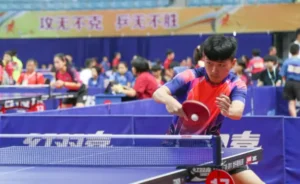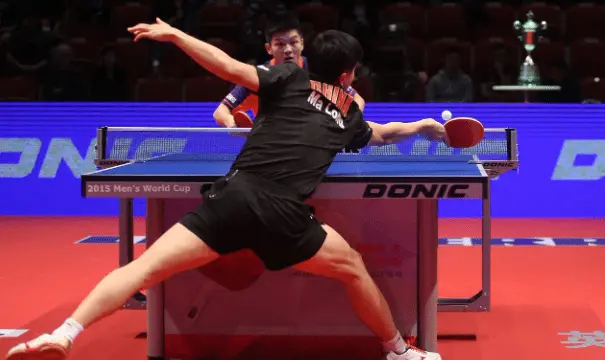How to Register for Table Tennis Tournaments
Table tennis, the arcade game called ping pong (honest), is a dynamic and fast-paced sport which is popular throughout the world. Whether you are a seasoned player or a newcomer, competing in tournaments can incredibly increase your abilities and gather you huge experience.
However, the procedure of registration may pose as a challenge, especially in case one is a beginner. This guide will serve as a step-by-step approach through which you will learn How to Register for Table Tennis Tournaments from the explanation of the different types of tournaments to the registration process and tips for triumphant participation.
Understanding Table Tennis Tournaments
Besides the registration step, it is necessary to know the competition structures and the various types of table tennis tournaments available:
1. Local Tournaments
Local tournaments are usually organized by clubs or community centers and are open to players of any age and playing level. They are venues for acquiring competitive experience and having fun without the fear of the elite level.
2. State and Regional Tournaments
These tournaments are typical events which are headed by state and regional associations. They may attract players from a larger geographical area. Oftentimes, the players need to fulfill certain qualifications, such as their standings in the rankings or previous tournament performances.

3. National Tournaments
National tournaments provide an opportunity for players that compete on a country’s level, e.g.
United States Table Tennis Association, or other national representative bodies.
The situation is they draw some of the best people from the nation. Participants in these tournaments mostly need to get the proper registration and be qualified.
4. International Tournaments
If you want to reach an international level, as in the ITTF World Tour events for example, that is your highest goal. Eligible criteria for these matches are quite detailed and players need to be ranked in order to enter.
Knowing which type of contest you wish to participate in will help improve your registration process.
Steps to Register for Table Tennis Tournaments
Step 1: Investigation Upcoming Tournaments
The very first step in the booking process is to find current tournaments in your area or at a stage you want to compete in. You have the possibility to do it by:
- Visiting Official Websites: Check the official websites of national and regional table tennis associations. They usually have a calendar of upcoming tournaments, including registration dates and locations.
- Social Media and Community Boards: Follow local clubs, associations, and players on social media. Many individuals post updates about recent events on social media like Facebook, Instagram, or Twitter.
- Word of Influence: Talk to other fans at your local club or region center. They can provide insights on upcoming tournaments and how to register.
Step 2: Check for Registration Requirements
Once you’ve picked a tournament you would like to enter, review the submission requirements really carefully. Each competition may have different eligibility criteria, including:
- One tournament may only be open to specific age groups, such as children who are just starting out, those with some experience, middle-aged adults, and older adults
- Skill Levels: Then there are those tournaments which are meant for all skill levels–young or old beginners right up to advanced level players who still can’t seem to make it to the top.
- Membership Requirements: In many tournaments, you will be required to present a player’s card from some national or regional table tennis association. But make sure you’re registered first before even trying to enter.
Step 3: Complete the Registration Form
Most tournaments will have a form that requires you to register before you can get into an event. This may be applied online or on pen and paper.
These are the fundamental types of content you’ll consider, such as:
- Personal details: Name, address, telephone number and e-mail etc.
- Date of Birth: For age-limited events, please
- Skill Level: Some matchmaking events may ask for your current rating or experience level to put you in the right category
- Club Members: If you’re an associate of a club, you’ll need to put next to the name.
Need-to-know Contact: It’s a good idea to have, since one never knows when things could go wrong during play at sea.

Step 4: Pay the Registration Fee
Most tournaments require a registration fee to participate. Fees will vary based on the tournament’s scope and the number of events you enter.
Make sure you pay this fee earlier than the registration cutoff date, as failure to do so may result in a denial of registration.
Payment methods can include:
- Online Payment: Many tournaments offer online payment options through their registration platforms.
- Check or Cash: If registering in person, you may be able to pay by cash or check.
Final Step 5: Confirm Your Registration
After submitting your registration form and payment, it’s essential to confirm that your entry has been processed. You can do this by:
- Verifying Validation Emails: Most tournament administrators send approval emails once your payment method is complete.
- Contacting Organizers: If you haven’t been sent a confirmation or have issues, reach out to the tournament officials via email or phone.
Phase 6: Set up for the Tournament
Once signed up, it’s time to gear up for the competition. Here are some guidelines that will help you to get set up:
- Regular Practice: Periodical practice makes the player feel comfortable and become more self-assured. It will help you to develop more critical thinking as you get more complex.
- Understand Tournament Rules: Get to know the specific rules and regulations of the tournament, such as scoring systems and match formats, in your area.
- Development of Your Time Management Skills: The tournament schedule must be consulted, and you come up with time. An early arrival can be a great time to familiarize yourself with the venue and, consequently, calm any pre-match jitters.
- Staying Hydrated and Nourished: Balanced diet and proper hydration are the keys to the impulses. You have to follow the diet and bring your diet for these times as well.
Tips for a Successful Tournament Experience
1. Stay Encouraged and Focused
Being a winner in a tournament can be stressful, but keeping a positive state of mind is crucial. Focus on your victory rather than the defeat, and remember that each contest is an opportunity to learn.
2. Respect Opponents and Officials
Sportsmanship is vital in any competition. Respect your opponents and tournament officials, as they contribute to the integrity of the sport. A positive attitude can enhance your experience and may lead to new friendships.
3. Learn from Every Match
Win or lose, each match provides an opportunity to learn. Analyze your results and identify areas for further study. Seeking feedback from coaches or more experienced players can also be beneficial.
4. Enjoy the Experience
Events are a chance to get to know fellow players, share knowledge, and enjoy the games you love. Appreciate your efforts, no matter how small, and take pleasure in your actions.
Conclusion
The first step to entry into the world of competitive play in table tennis is to sign up. By being aware of the different kinds of fundraisers, investigating your groups, and finishing the registration process. You can get yourself into the table tennis world successfully and without any problems. Be sure to prepare properly, adopt a positive attitude, and, of course, enjoy the activity. Be it play or success, tournaments are exciting parts of your table tennis life, thus remain inundated as you have fun. Well, then.
If you are actually interested in knowing more about us, please click here:
Difference Table of the Article
| Feature | Local Tournaments | State and Regional Tournaments | National Tournaments | International Tournaments |
|---|---|---|---|---|
| Level of Competition | Casual, suitable for beginners or casual players | More competitive, attracting players from a wider area | Highly competitive, top players of the country | Elite-level, top players from around the world |
| Eligibility | Open to players of all skill levels | Players may need to fulfill certain qualifications | Players must qualify or meet specific ranking requirements | Players must be ranked and meet detailed eligibility criteria |
| Organizers | Local clubs or community centers | State and regional associations | National associations (e.g., USA Table Tennis) | International Table Tennis Federation (ITTF) or other global bodies |
| Geographical Scope | Local, within a small area or city | Covers a state or regional area | National, within the country | International, across multiple countries |
| Type of Players | All age groups and skill levels | Players with some experience, often qualified through rankings | Best players from the nation, top-level competition | Best international players, high-level global competition |
| Prize and Recognition | Generally smaller prizes or trophies | Larger prizes, trophies, and more recognition | Major prizes, national recognition | Prestigious prizes and international recognition |




